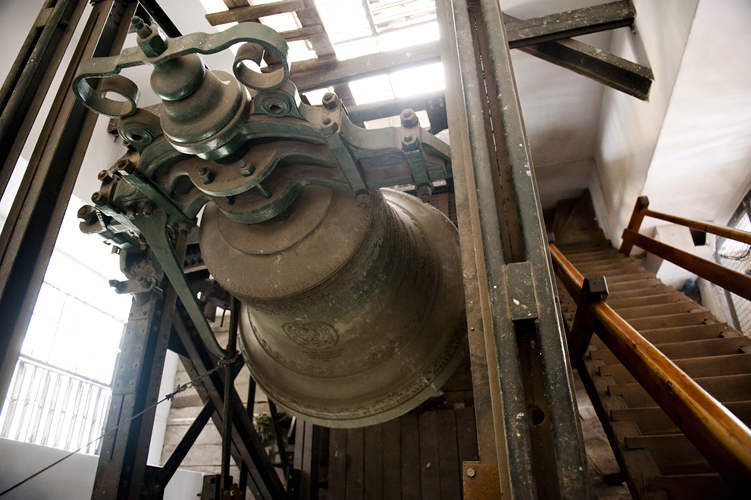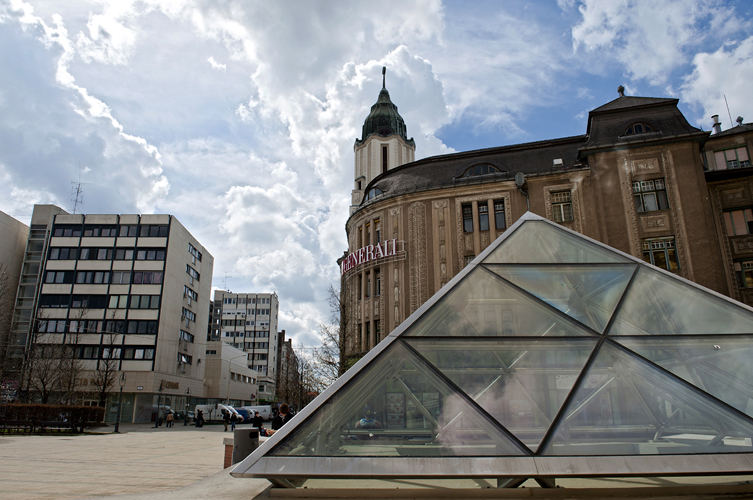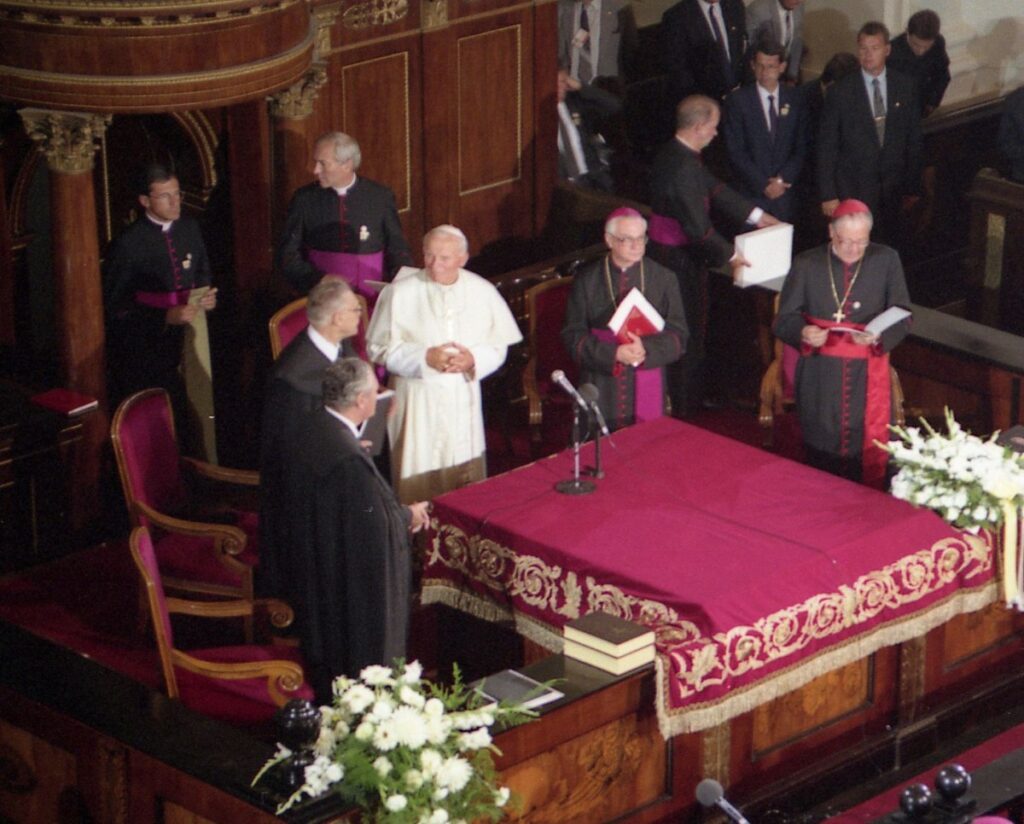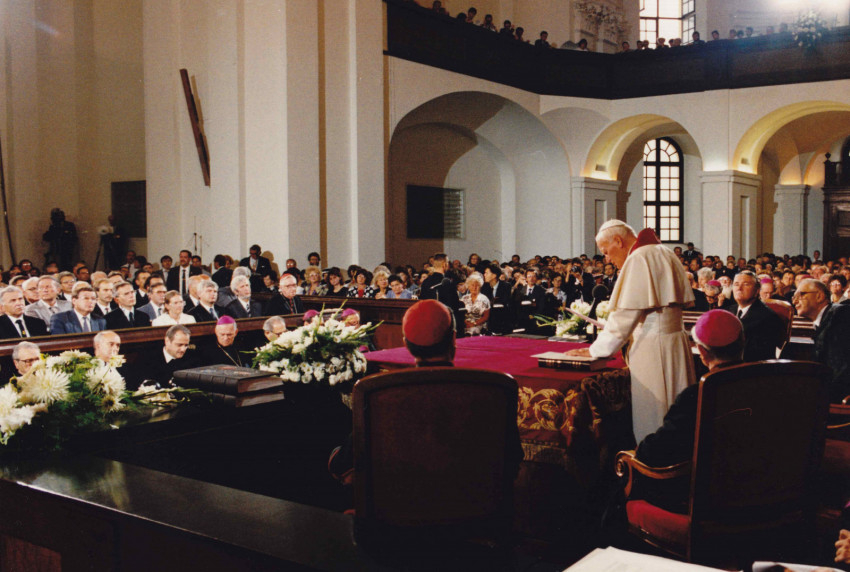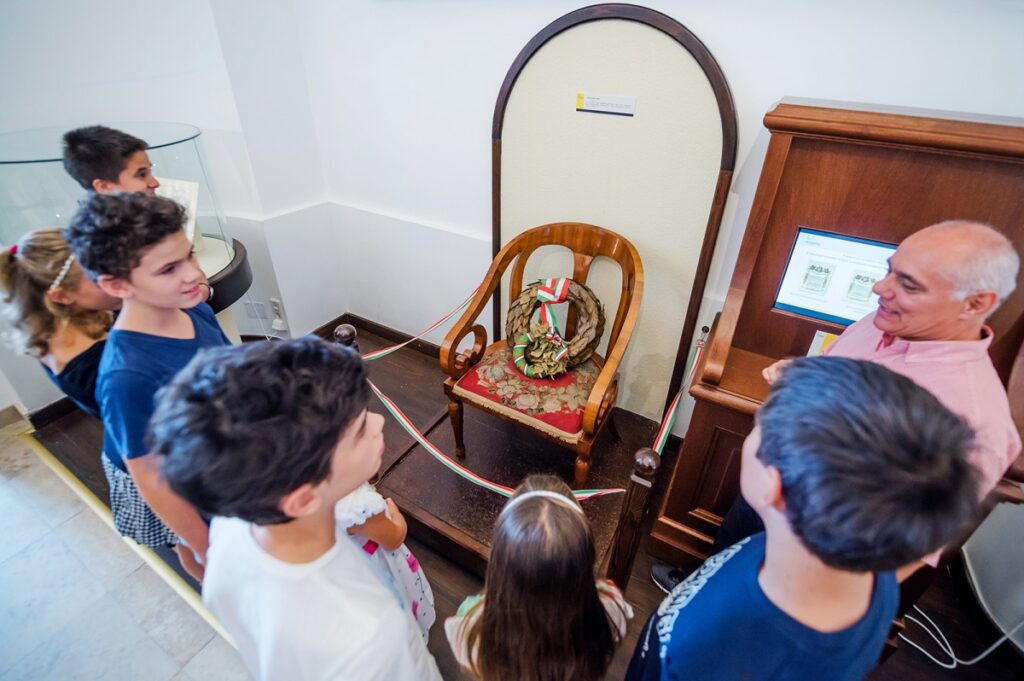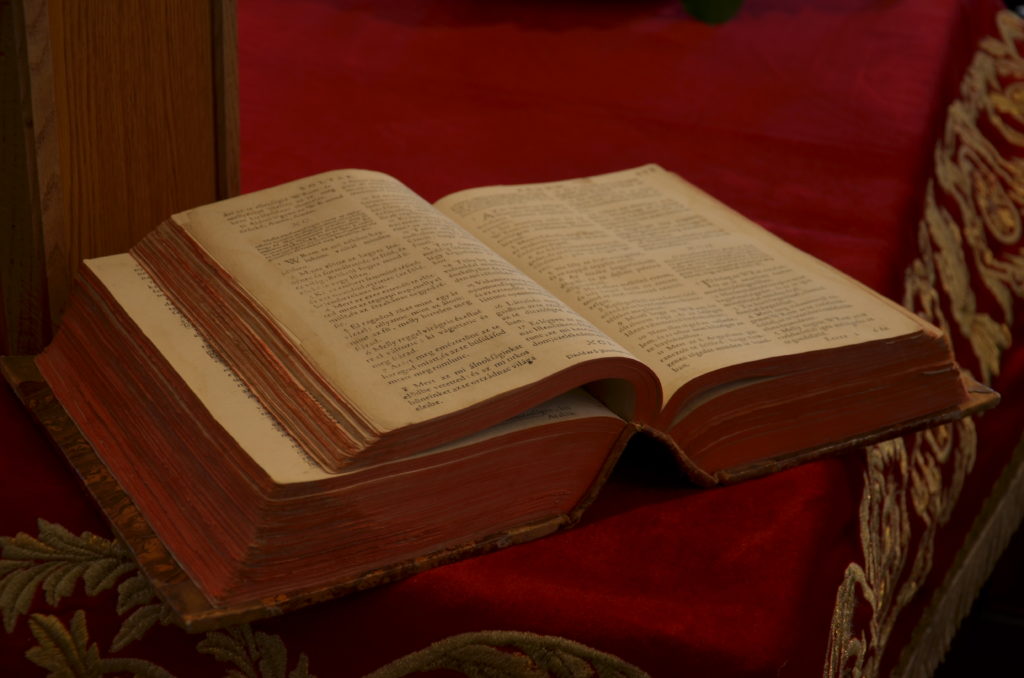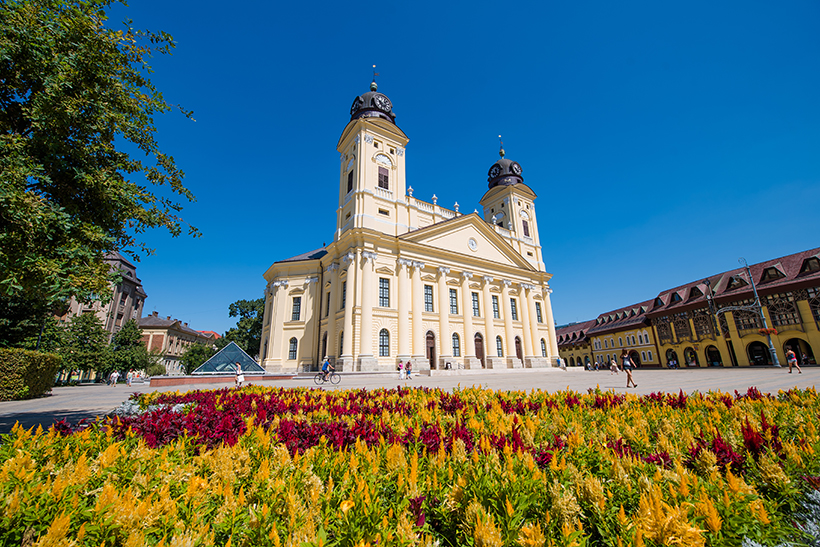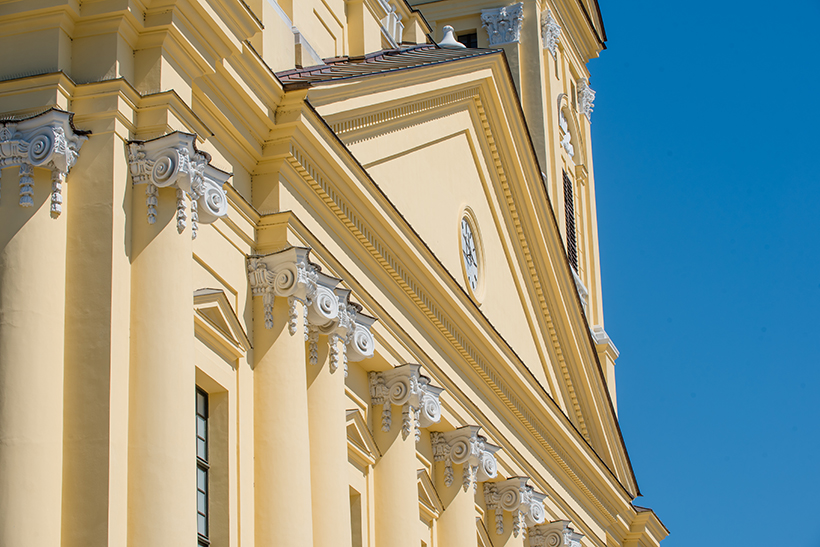The Reformed Church of Debrecen is often the first thing that comes to mind when you think of sights to see in Debrecen. The neoclassical building, which stands on the main square of the city, has become a symbol of Debrecen and is one of the city’s most popular tourist attractions for a reason – its development and fate are closely linked to the history of the city, and its size and role in history make it a national landmark.
But how many people know that there was a church on the site as early as the Árpád era? Or that it houses relics such as Kossuth’s chair and an original Vizsoly Bible? Here are 10 interesting facts about the Reformed Church of Debrecen that you should know before visiting.
1. The historical beginnings of the Great Church
According to archaeological excavations, there was already a church on the site of the present-day Great Church in the 13th-14th centuries. In the 1300s, in the free area between the villages of Debrecenfalva, Szentlászlófalva and Mesterfalva, which were founded in the Árpád period, in the historical core of the city of Debrecen, the first landlord of Debrecen, the nobleman Dósa, had the church of St. Andrew built in the 1300s. There is no exact date of its construction, but it is known that it was rebuilt around 1290-1300, as it burnt down during the Tatar invasion. The medieval St. Andrew’s Church was the largest church building in Transdanubia. The church burnt down again in 1564, leaving only a monument, a huge carved keystone with the symbolic flag of the lamb, the Agnus Dei, which became the coat of arms of the town. In 1626, with the support of Gábor Bethlen, the church was rebuilt, now for the Reformed faith.

2. Development of the Great Church as we know it today
Revived as a Reformed church in the 17th century, the single-nave, Gothic-style András Church was not spared by natural disasters and was completely burnt down in the great fire of 1802 in Debrecen. After the destruction of the András Church, the now known Great Church was built between 1805 and 1823 in the neoclassical style, based on the plans of Mihály Péchy and József Tháler. The church was damaged in the Second World War and took nearly 10 years to restore. The Reformed Church of Debrecen last underwent a complete interior and exterior renovation in 2014, when several new tourist attractions were added, such as the open loft and the panoramic walkway between the two towers.
3. A Verestorony
In 1642 in the south-eastern corner of the former St Andrew’s Church, the “Veresturm” (Tower of Blood) was built of unplastered red brick, housing the 56 m bell donated by György Rákóczi I. The bell did not melt in the fire that destroyed a large part of Debrecen on 11th June 1802 but fell to the ground when the wooden structure holding it burned down. The inhabitants tried to cool it with water, but it cracked due to the sudden expansion of the heat. Ignác Hilzer cut out the cracked part more than 50 years later (it was used to make the student bell of the Reformed College, which still exists today), but the intervention did not improve the sound of the cast iron. The bell was completely re-cast in 1873. Today’s bell is a scaled-down replica of the original Rákóczi bell (about 600 kilograms smaller), with the original inscriptions and the coat of arms of Rákóczi. Before the bell was recast, the coat of arms of the Rákóczi family was cut out of the bell and placed on display in the college, currently in the exhibition “Calvinist Rome”. When the Church of St. Andrew burned down, the Veresturm was also destroyed and is now replaced by a glass globe.
4. National Memorial
The Great Church is famous for its history. In January ’49 of the 1848-49 Revolution and War of Independence, the seat of the government and the parliament was temporarily moved to Debrecen because of the advance of Austrian troops threatening the capital. Along with the country’s leaders, thousands of residents of the capital moved to Debrecen. On 14th April 1849, Lajos Kossuth read out the Declaration of Independence, which included the dethronement of the House of Habsburg, in the Reformed Great Church. The statesman was elected and sworn in as governor of the country. The Reformed Great Church and the Reformed College behind it, which was the site of these historic events, are national monuments.
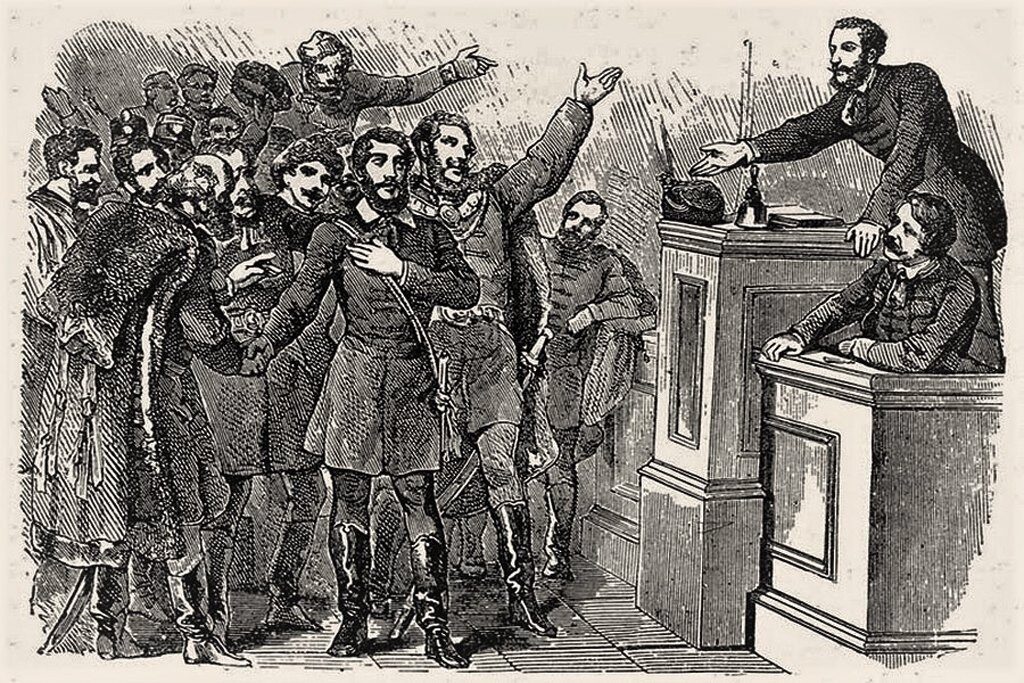
5. Visit of the Pope
In 1991, another important historical event took place within the walls of the Reformed Church. On the occasion of Pope John Paul II’s first apostolic journey to Hungary, from 16th to 20th August 1991, he visited Debrecen on 18 August, where he took part in an ecumenical meeting in the Great Church. In a powerful speech, the Pope expressed his support for the Catholic Church’s commitment to unity. At the end of the ecumenical meeting, in the spirit of reconciliation between Catholics and Reformed faiths, he laid a wreath on the Gaelic Apostles’ Memorial Column in the Memorial Garden behind the Great Church, which commemorates the Reformed teachers and preachers who were killed in the 17th century. In the August of 2021, on the occasion of the 30th anniversary of the Pope’s visit to Debrecen, a three-day series of celebrations was held in Debrecen, including an ecumenical liturgy of the Word in the Great Church. The memory of the papal visit is preserved in photographs in the exhibition on the history of the Church.
6. Monumentality
The Reformed Great Church of Debrecen is the largest Reformed church in Hungary in terms of floor area and an iconic building of Debrecen and the Hungarian Reformed Church. The monumentality of the church, built in neoclassical style, is reflected in its size and capacity. The church can accommodate nearly 2,000 people. The nave is 55 meters long and 15 meters wide, the transept 38 meters long and 14 meters wide. The church has a ceiling height of 21 meters and the towers are 61 meters high.
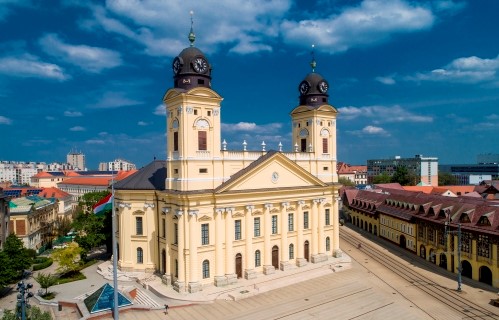
7. Church relics
Several important relics are on display in the permanent exhibitions of the Great Church. One of the most famous of these is the armchair in which Lajos Kossuth sat on 14th April 1849, when the dethronement of the Habsburg dynasty was proclaimed. The Kossuth Memorial Exhibition also houses several personal items of the revolutionary leader, including his briefcase and a copy of his Parliamentary Reports. The most important element of the Gathering History Exhibition is a Vizsoly Bible, which is accompanied by a replica so that visitors can also read the pages of the first Bible printed in Hungarian. In the church hall, you can also see photos and documents of the history of the congregation, as well as many beautiful altarpieces (chalices, jugs, pots, tablecloths, tablecloths), which are only displayed on major church festivals. Some of the earliest pieces date from the 17th century, not one of which is a typical Debrecen work of art, or possibly a gift from Transylvanian princes.
8. 200-year-old organ
One of the most beautiful sights on the ground floor of the church is the organ, made by the Viennese master organ builder Jacob Deutschmann in 1838. With 4258 pipes, 3 manuals, and 52 stops, it is one of the most beautiful church organs in Hungary. The organ is not only played during church services, as the Great Church is regularly used as a venue for musical devotions, organ concerts, and classical music concerts. In addition to the organ, from October 2020, the church’s 24 bells will also be regularly played, which were donated by individuals, companies, churches, and local authorities to mark the 200th anniversary of the first service at the Great Church.
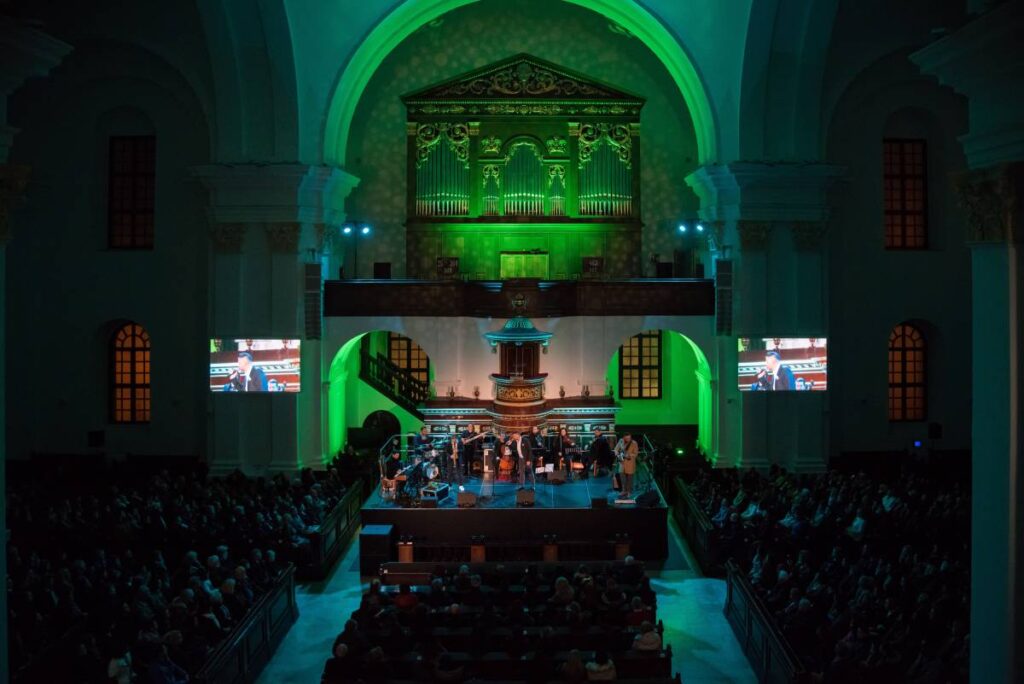
9. Time travel to the ancient Holy Land
In addition to the permanent exhibitions on the ground floor of the church, visitors can wander through the upper floors of the building. The second-floor gallery houses an exhibition of Biblical models and paintings, including 25 large-scale models by Pastor Lajos Csia and 52 paintings by painter Kálmán Tichy. The exhibition offers a unique journey through time to the ancient East and the Holy Land. In addition to the permanent exhibition, temporary exhibitions will be held in the gallery.
10. Attic, panoramic walkway and other attractions
In the east tower, an accessible lift takes you up to the sixth floor, the attic, where you can see the old clockwork and the church’s original design by Mihály Péchy. From the attic, you can walk up to the dome of the west tower to the Rákóczi bell, and enjoy a panoramic view of the city center from the panoramic walkway between the two towers.
Click here for opening hours and ticket prices of the Reformed Church of Debrecen.
